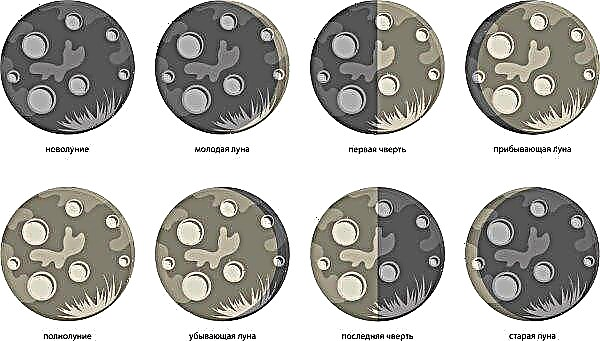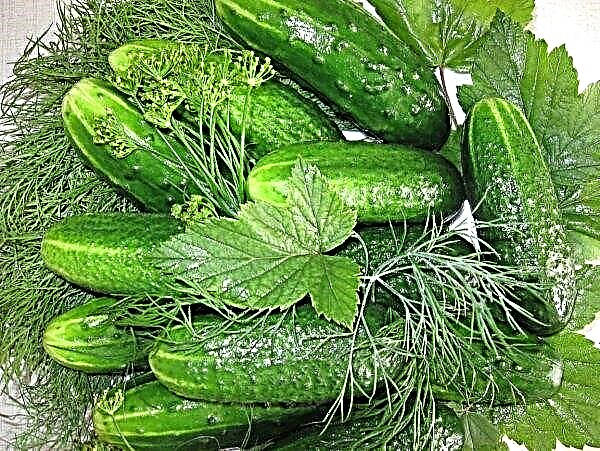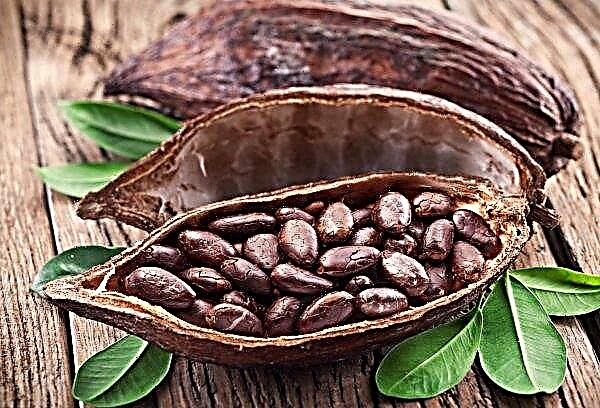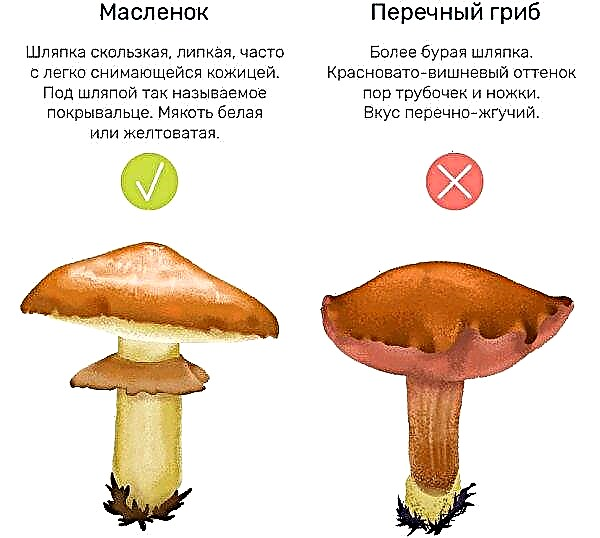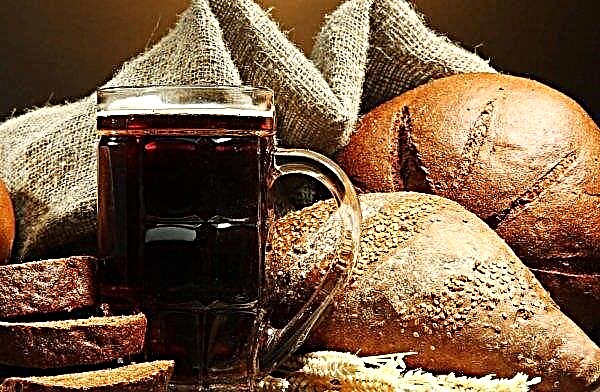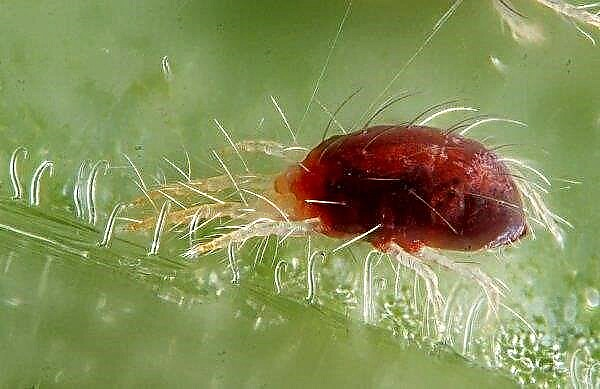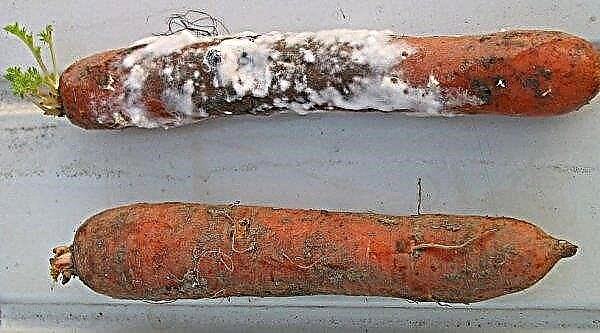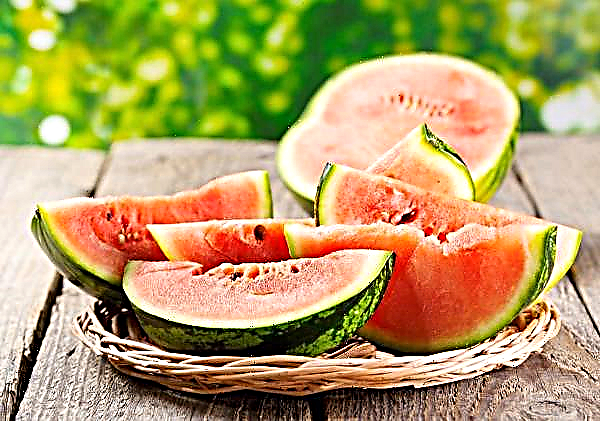To get high-quality meat and egg products, geese require a balanced diet from birth. Only in this case they will be able to please the owner with productivity, as well as good health. It is necessary to touch in detail on the main problems when feeding small goslings, and also to tell that chicks should eat in the first days of life.
Types of feed for geese
The daily diet of geese has serious differences from other types of poultry. First of all, this is influenced not only by the physiological characteristics of their body, but also by behavioral habits. When breeding geese, it is imperative to remember that they spend a certain part of their life in ponds, and cannot do without fresh grass. At the same time, these birds are undemanding to the amount of grain, therefore they can successfully feed in other concentrated feeds.
Types of feed used in goose rearing
| Feed type | Description |
| Dry | The most affordable and common feed among many farmers. It consists of all kinds of mixtures of millet, corn, wheat, barley, rye waste. Despite its nutritional value, such food does not contribute to instant weight gain; therefore, it is advisable only in unproductive periods, including during adulthood. |
| Wet | It is based on moistened dry food in combination with all kinds of specialized fertilizing and finely chopped vegetables and herbs. Such a mixture must be abundantly moistened with water (1.5 l of water is added per kg), so it causes less irritation to the stomach and is absorbed much more effectively than dry food. |
| Combined | It is a different combination of dry and wet food. Such food is more preferable for feeding geese; it allows providing their body with all the necessary substances and optimizing the robot's digestive tract as a whole. |
| Top dressing | They include all kinds of vitamin and mineral premixes, as well as supplements that improve the development of muscles and the skeletal system. Often they are introduced in small quantities in both dry and wet foods. |
Norms and rules for feeding goslings
Geese can rightfully be considered one of the most productive and mature poultry species, however, for this, from birth, each chick requires high-quality and balanced nutrition. For this, any farmer, regardless of the size of the farm, must adhere to the following rules:
- strictly observe the frequency of meals;
- the daily diet of the bird must necessarily consist of both dry feed and greens;
- at night, chicks should eat concentrated feeds based on protein or cereal foods;
- the food of the younger generation should be moist or semi-moist, this helps to increase its digestibility;
- geese are waterfowl, so the water in their diet should be in unlimited quantities.

How to make a diet for goslings at home
Creating quality and balanced nutrition for goslings is not difficult. Due to the fact that replenishment of the livestock most often occurs in the summer, almost every farmer succeeds in successfully supplying goslings with all the necessary nutrients and vitamins.
However, at the same time, many people forget that when drawing up the diet, it is imperative to take into account in which system young animals will be raised, with or without ponds.
Did you know? Geese are considered one of the oldest farm animals. According to existing artifacts, their domestication occurred about 3 thousand years ago, with the participation of the ancient Chinese, Romans and Germans.
Newborn
Freshly hatched chicks are fed immediately after they dry. Goslings are happy to enjoy any food. Best of all at this time, a boiled and carefully chopped goose egg, abundantly moistened with water, is suitable for them. Newborns are fed at least 8 times a day with an interval of 2 hours. As practice shows, such a regime makes it possible to increase the survival rate of young animals up to 90–95%, so you should not neglect attention to goslings on the first day. A newborn gosling should consume about 20 g of food per day.
As practice shows, such a regime makes it possible to increase the survival rate of young animals up to 90–95%, so you should not neglect attention to goslings on the first day. A newborn gosling should consume about 20 g of food per day.
Daily allowance
On the first day, an 8-time diet for goslings is still relevant, while the amount of feed per day per individual should increase to 30–35 g. From this moment, young animals can be fed with all kinds of mixers based on a crushed boiled egg.
Important! In the first few days of life, goslings are contraindicated in dairy products, as they can cause digestive upsets.
As an additional top dressing in such mixtures add:
- corn grits;
- bran;
- ground millet;
- bread soaked in water.
 Water is one of the main conditions for the proper development of both daily and more adult chickens. One day after birth, young animals must be provided with unlimited access to fresh and clean water throughout the day. In addition, to prevent colds, water must be warmed to room temperature.
Water is one of the main conditions for the proper development of both daily and more adult chickens. One day after birth, young animals must be provided with unlimited access to fresh and clean water throughout the day. In addition, to prevent colds, water must be warmed to room temperature.Three days
3-day-old goslings are fed the same way as the daily allowance, and in the same amount. The basis of their diet should be a mixture of eggs and fresh grass, as well as finely crushed carrots or peas. From 3 days it is advisable to replace the egg with fresh cottage cheese, which will help, like nothing else, saturate their body with the right amount of easily digestible protein.
Did you know? Domestic geese are considered to be true long-lived birds; under optimal conditions, they are able to live for about 25 years.
From this moment, the multiplicity of feeding goslings can be reduced to 6–7 times. If the rearing of young animals is carried out in the winter, carefully boiled root vegetables or vegetables are added to their diet instead of grass.
Mandatory at this time is unlimited access to goslings to fresh water. To improve their growth for evaporation, you can use a 5% glucose solution, while the multiplicity of replacing such a liquid with fresh, you need to increase 2 times. For the prevention of all kinds of diseases at this time, it is important to use all kinds of antibiotic drugs (Baytril or analogues) that saturate drinking water. But, they are administered only under the supervision of a veterinarian.
For the prevention of all kinds of diseases at this time, it is important to use all kinds of antibiotic drugs (Baytril or analogues) that saturate drinking water. But, they are administered only under the supervision of a veterinarian.
Weekly
At the age of 7–10 days, young growth shows an active increase in body weight, therefore their body needs an additional source of protein compounds. The daily diet of one individual should include at least 40–45 g of feed. Therefore, in addition to chopped herbs, goslings are given:
- crushed boiled beans;
- peas;
- soya beans.
Important! After feeding the birds, the feeders should be cleaned, because the stagnation of food (especially wet) causes the development of pathogenic microorganisms in them, which is fraught with poisoning for young animals.
In addition to such products include meat and bone meal, which is not only a source of protein, but also calcium. From this moment, the use of eggs is limited in the diet, and the number of all kinds of cereals (corn, wheat, etc.) gradually increases.
Additionally, goslings include chopped root vegetables and other vegetables. Their body also responds well to millet or cereal, which can be replaced with complex feed for young animals. In addition, many veterinarians advise including fish oil and complex vitamin-mineral preparations in their food at this time. A week after birth, goslings are transferred to a 4–5-time feeding, while water is also provided in plenty.
In addition, many veterinarians advise including fish oil and complex vitamin-mineral preparations in their food at this time. A week after birth, goslings are transferred to a 4–5-time feeding, while water is also provided in plenty.
Two weeks
2-week-old goslings are fed the same way as at a weekly age, but it is necessary to increase portions at least 1.5–2 times to 80 g / day / individual. 2 weeks after birth, the bird begins a sharp increase in body weight, so you should not neglect the amount of food. The basis of the diet should be wet mixers, while allowing an excessively viscous consistency of the feed is not worth it, as this can cause digestion in young animals.
Did you know? In the USA, geese are used for weeding cotton plantations. This bird does not feed on cotton, but eagerly cleans its plantations of any weeds. Thanks to this, you can not only increase the environmental friendliness of your products, but also eliminate the cost of expensive herbicides.
Three weeks
Three-week-old chickens eat almost the same food as at the age of 1-2 weeks. Their diet is based on green grass and chopped vegetables, which are enriched with cereals and bran. But, such food should provide one individual with not less than 120–170 g of feed. It is advisable to use sunflower oilcake (not more than 25 g / day / individual) as an additional energy source, which in moderation positively affects the growth of young stock. Water is given to the bird in plenty, while the number of feedings per day should not exceed 4–5.
It is advisable to use sunflower oilcake (not more than 25 g / day / individual) as an additional energy source, which in moderation positively affects the growth of young stock. Water is given to the bird in plenty, while the number of feedings per day should not exceed 4–5.
Monthly
At the age of 1 month, one individual needs approximately 300-350 g of food per day, distributed between 3 servings. Such a diet is based solely on fresh grass and vegetables, and the proportion of other grain dressings should not exceed 70 g per day. This is due to the fact that at this age in birds there is a sharp jump in weight gain and a change in metabolism, therefore excessively high-calorie nutrition can cause obesity in geese.
In addition, goslings become capable of independent walks at this time, so many farmers release them to the pond. Despite the fact that this is not a mandatory measure for their cultivation, the reservoir provides an opportunity to improve the quality of meat, as well as help the bird achieve optimal vitality. Near an open water body, geese independently produce food, which cannot but affect their diet. In this case, they remove green grass from their food, replacing it with chopped vegetables, and also increase the number of crops to make up for calorie loss.
Near an open water body, geese independently produce food, which cannot but affect their diet. In this case, they remove green grass from their food, replacing it with chopped vegetables, and also increase the number of crops to make up for calorie loss.
Features of feeding different groups
The division of the growing stock into separate groups begins around the age of 2-3 weeks. At this time, their diet should be adjusted. Otherwise, poultry farming may become irrational and result in significant losses.
Fattening for meat
If livestock is grown for meat, then its diet must necessarily be based on an intensive feeding system. This means that when feeding a bird, great attention should be paid to saturated cereals, the amount of which should be equal to herbal and other plant foods. In addition, with such a diet, it is necessary to increase portions by an average of 25%, which will give a bird weighing about 4-4.5 kg by the age of two weeks.
Parent stock feeding
When grown on a tribe, the diet of geese is a little different. In this case, extensive feeding is used, which ensures the development of full and healthy animals, ready to give high-quality offspring. Such individuals are fed with greens and vegetables throughout the day, and the amount of grain top dressing is often reduced by 15–20%. Grains and other high-calorie foods are given to such geese exclusively in the evening or at night.
Important! To ensure a balanced diet of small goslings, a third of concentrated feed instead of grain should be based on boiled potatoes.
Care and feeding of weak chicks
Unfortunately, in modern poultry farming it is not possible to avoid weakened or overly passive young animals. Under natural conditions, such animals often die, but with artificial cultivation, each farmer tries to benefit from each viable individual. For these purposes, in the first few days of life, livestock are sorted, and weak chicks are provided with double attention.
During the first week, such goslings are necessarily kept at a temperature of +28 ° С, which is gradually reduced to +23 ° С by a weekly age. And then they are kept in this mode until the moment when weak chicks get stronger. Also, weakened individuals are necessarily transplanted to a separate place, providing comfort and complete peace. To improve the survival of weakened goslings, various supportive preparations are indicated. The most common among them are:
They are used on the basis of the manufacturer's recommendations, until the body condition is completely improved.
Weakened chicks should also balance their diet. For their nursing, a bait from:
- 1 yolk;
- 0.5 tsp Sahara;
- penicillin or biomycin in a concentration of 50 thousand units. per 1 kg of animal weight.
Caring for small goslings is a simple, but quite responsible task, requiring the farmer appropriate attention. Despite the fact that the bird is considered unpretentious, in the first weeks of life it requires a special diet. Otherwise, unsustainable feeding can lead not only to a deterioration in the growth rate of young animals, but also to damage future poultry products.


